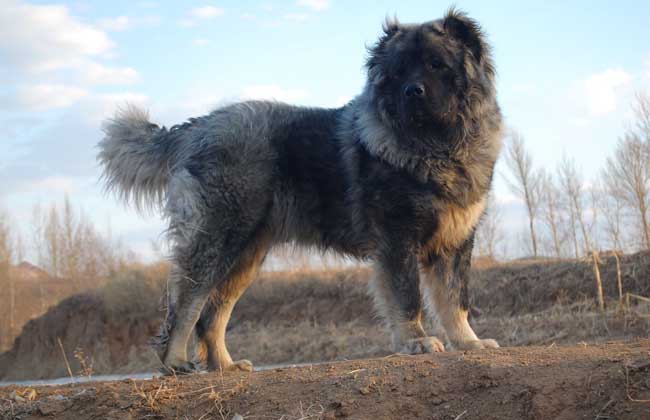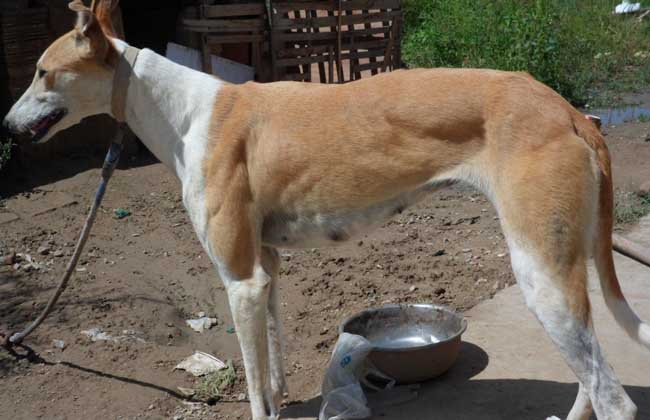How much is a Caucasian dog?

The Caucasian dog is one of the largest fierce dogs in the world, with a strong body, strong disease resistance, fierce temperament, calm and stable, high alertness, sensitive intuition, strong personality and self-confidence, and is loyal to its owner. it is the most suitable for guarding homes, guarding villas, warehouses, farms or pastures, but it is not suitable for ordinary families. Let's take a look at how much a Caucasian dog costs.
How much is a Caucasian dog?
The price of Caucasian dogs is not uniform. Generally speaking, Caucasian dog farms in developed cities are more expensive, Caucasian dogs in remote areas are cheaper, and the prices of Caucasian dogs of different quality must be different. Generally speaking, the price of a non-purebred Caucasian dog is about 200,700 yuan, that of a pet dog is about 800,000yuan, that of a purebred dog is 100000yuan, and that of a race dog is between 2000,000 and 50000. There are also some differences in price for puppies. Domestic puppies are generally 80 to 3000 yuan, kennel puppies are generally 2000 to 100000 yuan, and competition puppies are more than 10000 yuan and there is no upper limit.
Selection and purchase of Caucasian Dogs
1. Posture: good and healthy dogs are lively and active, and sick dogs are often lethargic, insensitive or excited, frightened, and feel heavier than they look.
2. Eyes: the conjunctiva of good dogs is pink, no tears, no secretions.
3. Nose: under normal circumstances, the nose tip of the dog is wet and cool without mucus or thick secretion. If the nose tip is dry and cracked or thick secretion accumulates, the health condition is not good.
4. Oral cavity: the mouth of the healthy dog is pink, without peculiar smell, the tongue is bright red without tongue coating, the teeth are white, the canine teeth are crisscross when closed, and there is no incomplete closure or salivation.
5. Fur: the fur is warm but not hot, fluffy and neat, the hair color is fresh, the skin is flexible and not loose, but it is not too wet, no hair removal, check to see if there are lice.
6. Anus: the anus of healthy dogs is tight, and there is no foreign body around.
Breeding methods of Caucasian Dogs
1. When feeding the dog, it should be fixed time, fixed quantity, fixed temperature, fixed person and fixed point. At the same time, dogs should be given adequate drinking water according to different seasons. Foods that are cold, rotten or have a pungent smell should not be fed to dogs to prevent disease.
2. Breeders must always be present when feeding the dog, pay attention to observation, and be sure to remove the bones or fish bones from the food before feeding, so as not to hurt the dog. When you find that dogs eat less or do not eat, you should find out the cause in time and deal with it properly.
3. Dogs cannot be fed immediately after strenuous exercise. It is not appropriate to do strenuous exercise within 30 minutes after feeding.
4. The utensils for feeding dogs should be washed and disinfected frequently to keep them clean and hygienic. Food utensils should be one by one dog and should not be used in series so as not to spread other diseases.
5. In order to exercise the dog's ability to adapt to various kinds of feed and food under various conditions, dry food or cooked food can be properly fed to the dog during training and use. Such as bread, biscuits, steamed buns, cans, cooked eggs or cooked meat.
Training methods of Caucasian Dogs
1. Food reflex: through feeding and management, dog owners can ensure the normal survival and development of dogs, and establish and strengthen their attachment to their owners. At the same time, we can also use the dog's appetite to lure the dog to make some movements, and through food reward to strengthen and consolidate the correct movement of the dog.
2. free reflex: dogs strive to get rid of the restrictions on their own activities in order to gain freedom. it is used in dog training as an important means of strengthening and an effective measure to regulate the activity of the nervous system.
3. Guard against reflex: dogs can maintain their own safety and take active attack or passive escape from the target, which is the basis of training dogs' brave and alert quality.
4. exploring reflex: dogs can detect the changes of external environment and things in time, find out their own interests, and take corresponding actions, which is the basis of cultivating dogs' vigilance ability and inducing dogs to smell odors.
5. Hunting reflex: the main means for wild dogs to survive and feed, which has been gradually degraded to some extent after the domestication of dogs. In the training, through patient, meticulous and ingenious induction, the dog's high excitement and strong possessive desire to obtain what he wants can be fully reconciled, which is an important basis for cultivating the ability of tracking, identification and search.
6. Postural reflex: the dog can coordinate the balance of body posture, make use of the inherent natural posture and body balance movement response of the dog in training, and make the dog complete some basic subjects through correct induction and proper coercion.
Related
- A course of planting techniques and methods on how to grow carrots
- How to plant the latest tulips?
- Is it better to pick tea in the morning or in the afternoon? When is the best time for tea to be picked? what is the third or fifth tea?
- Launch Yuanxiao Happy combination Haocha + Tea Yuan healthy Taste
- Penghu Tourism "Fireworks 20 Parade with You"
- 2022 West Lake Happiness holds "Digital Revitalization Voucher" and draws iphone13 and laptop.
- Banqiao Fuzhou social houses are designed to change start-up combined with police elimination to create a safe and livable environment
- The convenient measure of "mechanical weeding" in Xinbei has been abused and the Agriculture Bureau has imposed heavy penalties on the illegal land consolidation.
- Changgeng University Joins Hands with Four Memory Factories to Rescue Memory Talent Shortage
- The list of Taiwan's top 100 MVP managers is listed by the Director-General of the Farmers' Association of Sanxia District.



